-
 Bitcoin
Bitcoin $82,099.5826
-1.34% -
 Ethereum
Ethereum $1,817.9545
-1.07% -
 Tether USDt
Tether USDt $0.9999
0.02% -
 XRP
XRP $2.0815
-3.96% -
 BNB
BNB $595.8647
-1.53% -
 Solana
Solana $124.0327
-0.92% -
 USDC
USDC $1.0000
0.01% -
 Dogecoin
Dogecoin $0.1634
-3.94% -
 Cardano
Cardano $0.6445
-4.65% -
 TRON
TRON $0.2336
1.34% -
 Toncoin
Toncoin $3.9381
2.61% -
 Chainlink
Chainlink $13.2201
-3.75% -
 UNUS SED LEO
UNUS SED LEO $9.0947
-5.84% -
 Stellar
Stellar $0.2646
-1.90% -
 Avalanche
Avalanche $18.6234
-3.91% -
 Shiba Inu
Shiba Inu $0.0...01214
-3.88% -
 Sui
Sui $2.2126
-6.78% -
 Hedera
Hedera $0.1604
-6.61% -
 Polkadot
Polkadot $4.0237
-1.97% -
 Litecoin
Litecoin $82.1655
-4.48% -
 MANTRA
MANTRA $6.2849
-1.13% -
 Bitcoin Cash
Bitcoin Cash $298.8203
-2.66% -
 Dai
Dai $1.0000
0.02% -
 Bitget Token
Bitget Token $4.4293
-4.57% -
 Ethena USDe
Ethena USDe $1.0000
0.01% -
 Pi
Pi $0.6976
-9.77% -
 Hyperliquid
Hyperliquid $12.5853
-0.74% -
 Monero
Monero $215.4717
-0.22% -
 Uniswap
Uniswap $5.8825
-1.85% -
 Aptos
Aptos $5.1958
-2.29%
How to build a multi-GPU mining rig?
Careful planning is crucial for a profitable multi-GPU mining rig; choose the right cryptocurrency, high-performance GPUs, and ensure adequate cooling and power supply.
Mar 29, 2025 at 04:57 am
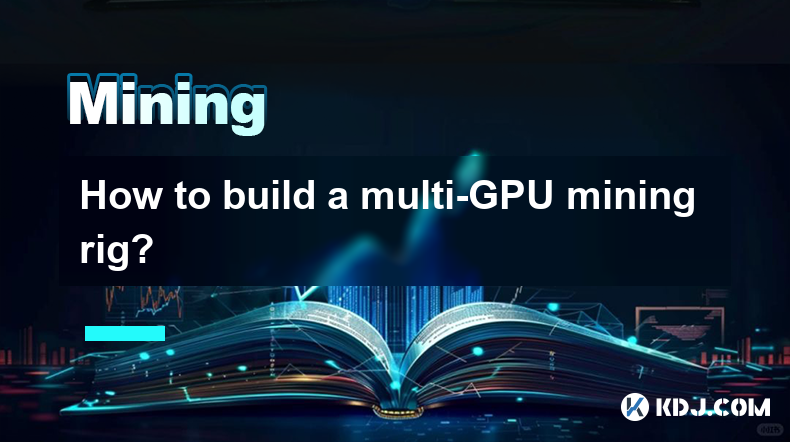
Planning Your Multi-GPU Mining Rig
Before you even think about purchasing components, careful planning is crucial. This involves identifying the most profitable cryptocurrency to mine, given your geographical location and electricity costs. Research the profitability of different coins using mining calculators, factoring in your hash rate and energy consumption. Choosing the right cryptocurrency is paramount to your success. The profitability of mining fluctuates constantly, so staying informed is key. Consider the difficulty of mining the chosen coin; a highly competitive coin may require an exceptionally powerful rig to be profitable.
Choosing Your Graphics Cards (GPUs)
The heart of your mining rig is the GPUs. Selecting high-performance cards with ample VRAM is essential. AMD and Nvidia cards are popular choices, but their relative performance varies depending on the algorithm of the cryptocurrency you're targeting. Research benchmarks and reviews to find the best cards for your chosen coin. Consider factors like power consumption and cooling solutions; inefficient cards will significantly increase your electricity costs. Don't forget to check for availability and pricing; GPU prices can fluctuate wildly.
Selecting the Motherboard
The motherboard needs to support multiple GPUs. Look for motherboards with ample PCIe slots, ideally with reinforced slots to handle the weight of multiple graphics cards. Check the motherboard's specifications to ensure compatibility with your chosen GPUs and CPU. Some motherboards offer features like dual BIOS, which can be beneficial for mining. Pay attention to the chipset; a high-quality chipset ensures stable performance and prevents bottlenecks.
Choosing the CPU and RAM
While the GPUs do the heavy lifting, the CPU and RAM still play a vital role. A mid-range CPU is sufficient for most mining operations; you don't need a high-end processor for this task. Similarly, 8GB to 16GB of RAM is usually adequate. Focus your budget on the GPUs; they are the most crucial components for maximizing mining efficiency. Overspending on the CPU and RAM will not significantly improve mining performance.
Power Supply Unit (PSU)
The PSU is critical; it must supply enough power for all components, especially the GPUs. Underpowering your rig can lead to instability and damage. Calculate the total power draw of all components and choose a PSU with a significantly higher wattage rating to ensure sufficient headroom. High-quality PSUs with multiple PCIe power connectors are recommended for reliable operation. Consider modular PSUs to simplify cable management.
Choosing the Case and Cooling
A spacious case with good airflow is essential for keeping your components cool. Adequate cooling prevents overheating and performance throttling. Consider a case with multiple fans and good ventilation. You might need additional cooling solutions, such as case fans or active GPU coolers, especially for high-power GPUs. Proper airflow is critical for maintaining optimal operating temperatures and extending the lifespan of your components.
Assembling Your Multi-GPU Mining Rig
Once you've gathered all the components, it's time to assemble the rig. Follow these steps:
- Install the CPU and RAM: Carefully install the CPU and RAM into the motherboard, following the manufacturer's instructions.
- Mount the motherboard in the case: Securely mount the motherboard into the case.
- Install the GPUs: Carefully install the GPUs into the PCIe slots, ensuring they are firmly seated.
- Connect the power cables: Connect the power cables from the PSU to the motherboard, GPUs, and other components.
- Install the storage drive: Install your storage drive (SSD or HDD).
- Connect the peripherals: Connect your monitor, keyboard, and mouse (optional).
- Install the operating system: Install a suitable operating system (e.g., Windows or Linux).
- Install mining software: Install your chosen mining software and configure it to mine your selected cryptocurrency.
Software and Configuration
After assembling the rig, you need to install the appropriate software. Choose mining software that is compatible with your GPUs and chosen cryptocurrency. Configure the software to connect to a mining pool, which distributes the mining workload and pays you for your contribution. Monitor your rig's performance and adjust settings as needed to optimize your hash rate and profitability. Regularly update your mining software to benefit from bug fixes and performance improvements.
Monitoring and Maintenance
Regular monitoring is essential. Use monitoring software to track your rig's performance, temperatures, and power consumption. This helps identify potential problems early on. Regularly clean the dust from your rig to maintain optimal cooling. Keep an eye on your GPU temperatures; overheating can lead to damage. Regular maintenance extends the lifespan of your components and ensures consistent mining performance.
Frequently Asked Questions
Q: What is the most profitable cryptocurrency to mine with a multi-GPU rig?
A: The most profitable cryptocurrency to mine constantly changes based on factors like difficulty, price, and electricity costs. Use mining calculators to compare profitability for different coins.
Q: How much does it cost to build a multi-GPU mining rig?
A: The cost varies greatly depending on the number and type of GPUs, other components, and their respective prices. Expect a significant investment.
Q: How much power does a multi-GPU mining rig consume?
A: Power consumption depends heavily on the number and type of GPUs. It can range from several hundred watts to over a kilowatt. This will significantly impact your electricity bill.
Q: What are the risks associated with cryptocurrency mining?
A: Risks include hardware failure, fluctuating cryptocurrency prices, increased mining difficulty, and potential regulatory changes. Profitability is not guaranteed.
Q: Is mining cryptocurrency profitable?
A: The profitability of mining depends on many factors and is not guaranteed. Thorough research and careful planning are essential. Profitability can change rapidly.
Q: What are the best GPUs for mining?
A: The "best" GPUs depend on the specific algorithm of the cryptocurrency you are mining. Research benchmarks and reviews to find the best options for your chosen coin. High VRAM is generally advantageous.
Q: What operating system is best for mining?
A: Both Windows and Linux are suitable operating systems for mining. Linux is often preferred for its stability and efficiency. Choose the OS you are most comfortable managing.
Q: How do I choose a mining pool?
A: Choose a reputable mining pool with a large hash rate, low fees, and a good payment history. Research different pools to find one that best suits your needs. Consider factors like pool size and payment methods.
Disclaimer:info@kdj.com
The information provided is not trading advice. kdj.com does not assume any responsibility for any investments made based on the information provided in this article. Cryptocurrencies are highly volatile and it is highly recommended that you invest with caution after thorough research!
If you believe that the content used on this website infringes your copyright, please contact us immediately (info@kdj.com) and we will delete it promptly.
- CZ Announces Plan to Donate 500 BNB Each to Myanmar and Thailand
- 2025-03-31 20:00:12
- Bitcoin (BTC -2.46%) has earned a place in almost every investor's portfolio.
- 2025-03-31 20:00:12
- Bitcoin (BTC) ETF Witnessed a Major Shift as Investors Pulled out $93 Million
- 2025-03-31 19:55:12
- Nigeria Accuses Binance of Facilitating Terrorism and Kidnapping Financing
- 2025-03-31 19:55:12
- A Sentiment Shift Appears Underway Within the XRP Community
- 2025-03-31 19:50:12
- A Quarter of S&P 500 Firms Could Be Holding Bitcoin on Their Balance Sheets by 2030: Report
- 2025-03-31 19:50:12
Related knowledge
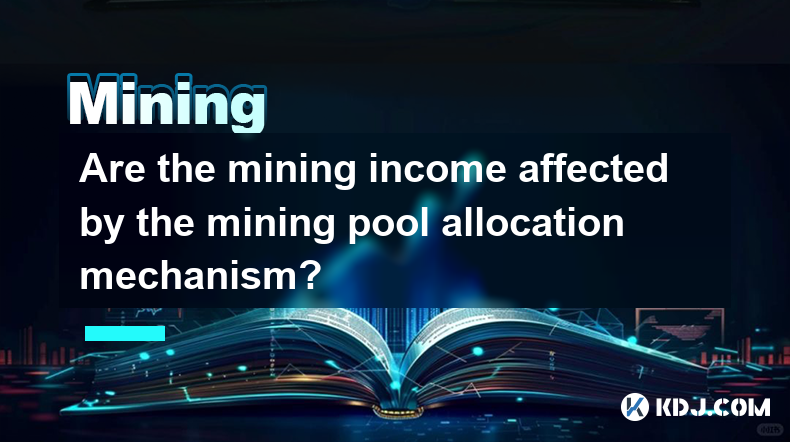
Are the mining income affected by the mining pool allocation mechanism?
Mar 31,2025 at 05:49pm
Understanding Mining Pool Allocation MechanismsMining pools aggregate the hashing power of many miners to increase the chances of successfully mining a block. The reward for successfully mining a block is then distributed among the pool's participants based on their contribution – usually measured in shares submitted. The allocation mechanism determine...
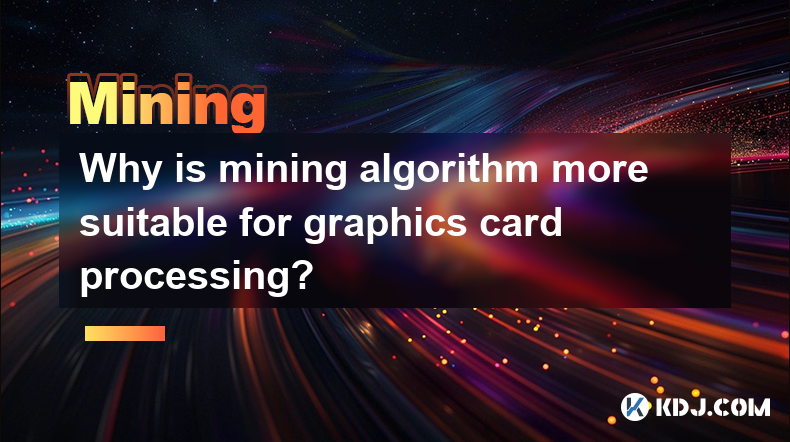
Why is mining algorithm more suitable for graphics card processing?
Mar 31,2025 at 05:28pm
The Parallel Processing Power of GPUs in Cryptocurrency MiningThe core reason why many cryptocurrency mining algorithms are more suitable for graphics card (GPU) processing lies in their inherent architecture. GPUs are designed for parallel processing, handling many calculations simultaneously. This contrasts with CPUs, which excel at sequential proces...
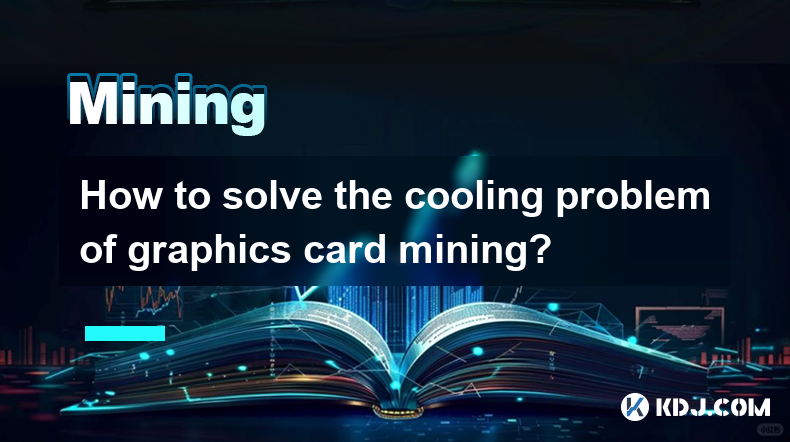
How to solve the cooling problem of graphics card mining?
Mar 31,2025 at 02:35pm
Understanding GPU Cooling in Cryptocurrency MiningGraphics cards (GPUs) generate significant heat during cryptocurrency mining, demanding efficient cooling solutions to prevent damage and maintain optimal performance. Overheating can lead to reduced hash rates, instability, and even permanent hardware failure. This necessitates a proactive approach to ...
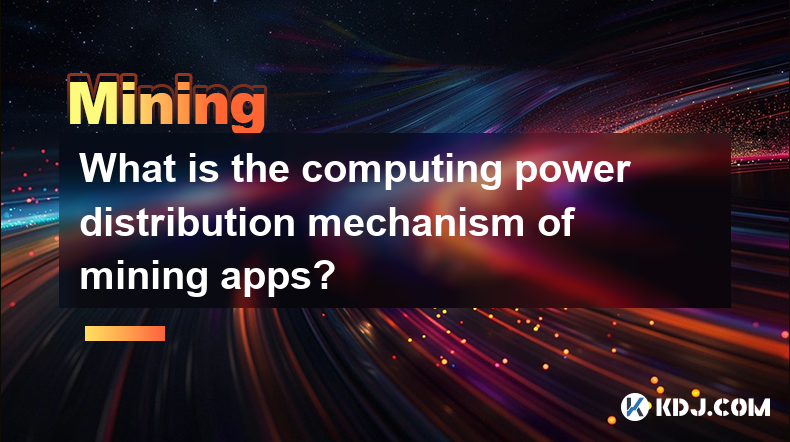
What is the computing power distribution mechanism of mining apps?
Mar 31,2025 at 03:56pm
Understanding Hashrate Distribution in Mining AppsMining apps, used to participate in the Proof-of-Work (PoW) consensus mechanism of cryptocurrencies like Bitcoin, rely on a distributed network of miners contributing computing power. This power, measured in hashes per second (hashrate), isn't evenly distributed. Understanding how it's allocated is cruc...
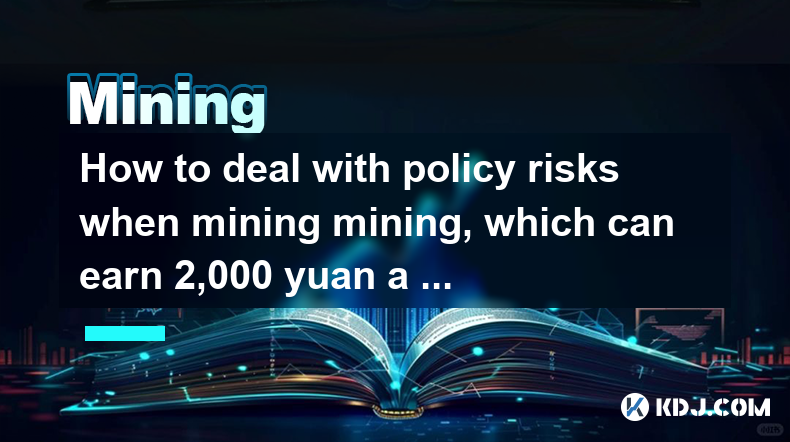
How to deal with policy risks when mining mining, which can earn 2,000 yuan a day?
Mar 31,2025 at 05:00pm
How to Deal with Policy Risks When Mining, Aiming for 2,000 Yuan Daily Profit? Understanding the Volatility of Cryptocurrency MiningMining cryptocurrencies, with the goal of a 2,000 yuan daily profit, is incredibly ambitious and inherently risky. This ambition hinges heavily on several factors, including the chosen cryptocurrency, the hash rate of your ...
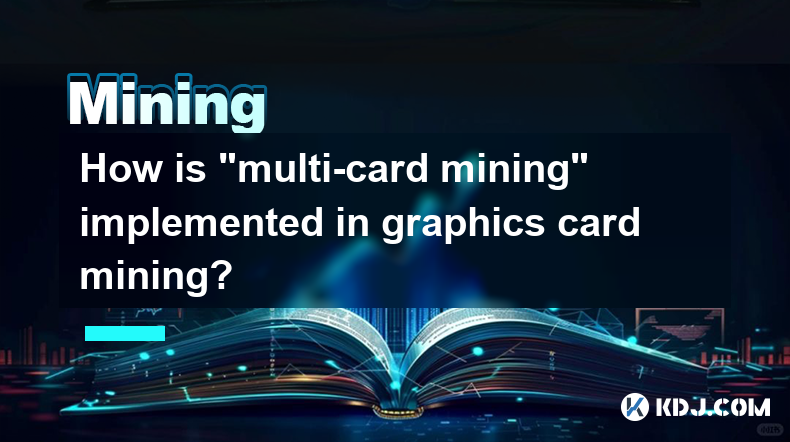
How is "multi-card mining" implemented in graphics card mining?
Mar 31,2025 at 07:49pm
Understanding Multi-Card Mining SetupMulti-card mining, in the context of cryptocurrency mining using graphics cards (GPUs), refers to the practice of using multiple GPUs simultaneously to increase the overall hashing power and thus, the chances of successfully mining a block and earning cryptocurrency rewards. This is significantly more efficient than...

Are the mining income affected by the mining pool allocation mechanism?
Mar 31,2025 at 05:49pm
Understanding Mining Pool Allocation MechanismsMining pools aggregate the hashing power of many miners to increase the chances of successfully mining a block. The reward for successfully mining a block is then distributed among the pool's participants based on their contribution – usually measured in shares submitted. The allocation mechanism determine...

Why is mining algorithm more suitable for graphics card processing?
Mar 31,2025 at 05:28pm
The Parallel Processing Power of GPUs in Cryptocurrency MiningThe core reason why many cryptocurrency mining algorithms are more suitable for graphics card (GPU) processing lies in their inherent architecture. GPUs are designed for parallel processing, handling many calculations simultaneously. This contrasts with CPUs, which excel at sequential proces...

How to solve the cooling problem of graphics card mining?
Mar 31,2025 at 02:35pm
Understanding GPU Cooling in Cryptocurrency MiningGraphics cards (GPUs) generate significant heat during cryptocurrency mining, demanding efficient cooling solutions to prevent damage and maintain optimal performance. Overheating can lead to reduced hash rates, instability, and even permanent hardware failure. This necessitates a proactive approach to ...

What is the computing power distribution mechanism of mining apps?
Mar 31,2025 at 03:56pm
Understanding Hashrate Distribution in Mining AppsMining apps, used to participate in the Proof-of-Work (PoW) consensus mechanism of cryptocurrencies like Bitcoin, rely on a distributed network of miners contributing computing power. This power, measured in hashes per second (hashrate), isn't evenly distributed. Understanding how it's allocated is cruc...

How to deal with policy risks when mining mining, which can earn 2,000 yuan a day?
Mar 31,2025 at 05:00pm
How to Deal with Policy Risks When Mining, Aiming for 2,000 Yuan Daily Profit? Understanding the Volatility of Cryptocurrency MiningMining cryptocurrencies, with the goal of a 2,000 yuan daily profit, is incredibly ambitious and inherently risky. This ambition hinges heavily on several factors, including the chosen cryptocurrency, the hash rate of your ...

How is "multi-card mining" implemented in graphics card mining?
Mar 31,2025 at 07:49pm
Understanding Multi-Card Mining SetupMulti-card mining, in the context of cryptocurrency mining using graphics cards (GPUs), refers to the practice of using multiple GPUs simultaneously to increase the overall hashing power and thus, the chances of successfully mining a block and earning cryptocurrency rewards. This is significantly more efficient than...
See all articles






















































































